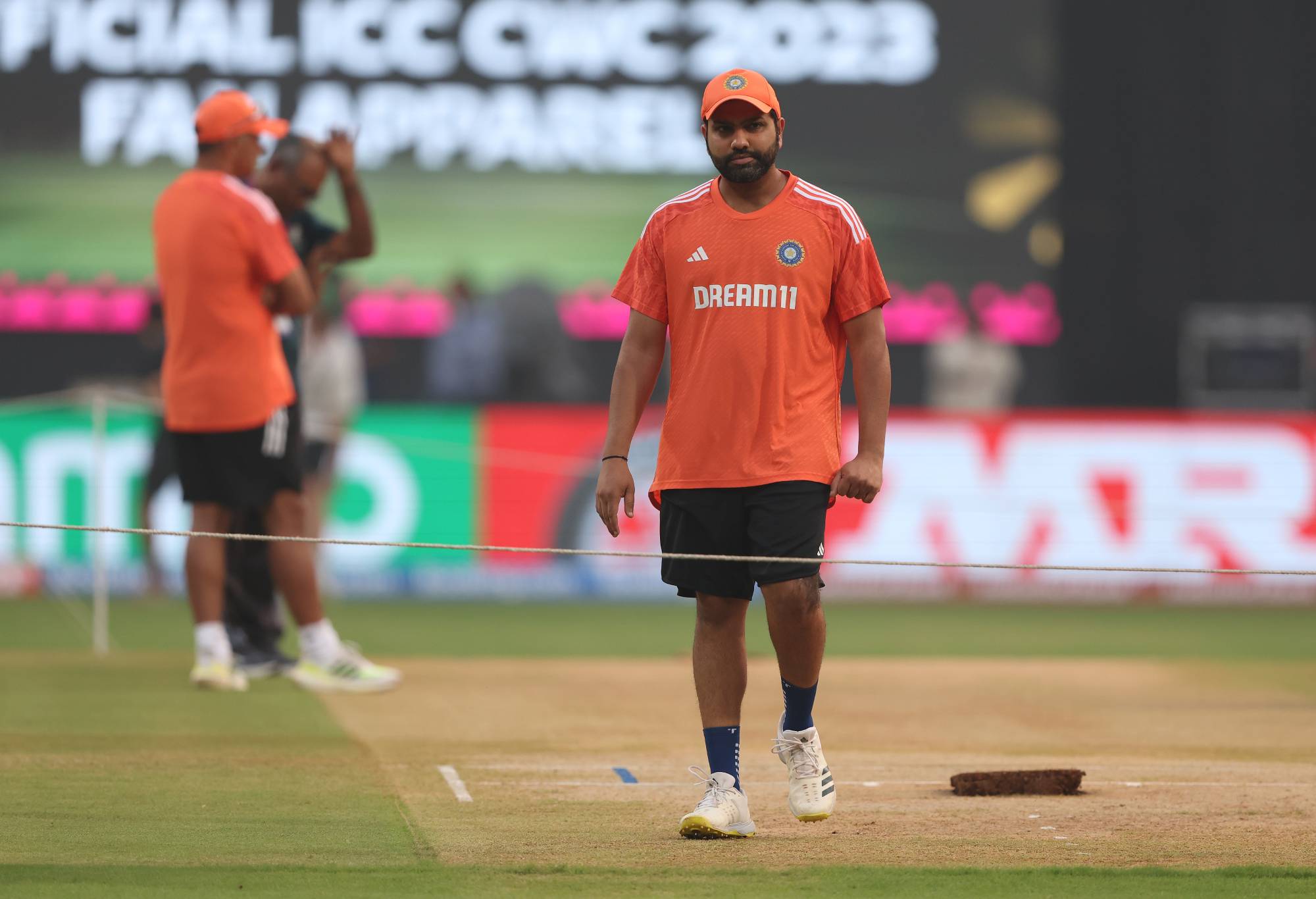Are India selecting themselves out of T20 World Cup glory?
Insanity is doing the same thing repeatedly and expecting different results. This quote is often attributed to Albert Einstein, but nobody knows if he…
Opinion
The ICC will give a shot clock a trial run and it should not only become permanent but be more stringent to speed up cricket in all three formats.
Starting with next Sunday’s West Indies vs England men’s ODI series in the Caribbean, fielding teams will have 60 seconds at the end of each over to be ready to bowl the next one.
If they fail to do so three times in an innings, they will cough up five penalty runs.
The idea has merit but should go further. A minute is more than enough time to get ready for the next over – make it 45 seconds in white-ball games at least where endurance is less of a factor for fielding sides.
And make the rules apply to the batting side as well. If a batter is not ready to receive the ball after the same timeframe in between overs, throw a five-run penalty their team’s way as well.
There is a virtually pointless time limit placed on batters at the fall of a wicket of 2-3 minutes depending on the playing conditions of a tournament, as Sri Lankan veteran Angelo Mathews can attest to after his controversial timed out dismissal against Bangladesh in the World Cup.

Angelo Mathews leaves the field after being timed out in Sri Lanka’s World Cup clash with Bangladesh. (Photo by Matt Roberts-ICC/ICC via Getty Images)
Timed out should be removed as a form of dismissal in the Laws of Cricket and replaced with penalty runs.
Once the finger goes up or the third umpire flashes out to signal a dismissal, the countdown clock should be on the big screen to let the incoming batter know how long they’ve got to get in position. If they fail to do so, being told to do the walk of shame a la Mathews back to the pavilion is too heavy handed.
But a five-run penalty is a more appropriate punishment.
Bangladesh skipper Shakib Al Hasan denigrated his already spotty reputation when he appealed to Marais Erasmus to capitalise on Mathews’ misfortune of his helmet strap snapping before he was ready to face guard.
Such extraordinary incidents should not depend on whether the fielding captain appeals or not. It is a black and white issue of a batter being ready in time or not, a shot clock not only removes any grey area but could also be an extra avenue for fans to get involved by counting down the seconds if a batter is cutting it fine.
The in-between overs shot clock is on a six-month trial run, according to the ICC, which has been typically slow to react on this issue after the MCC rules committee containing Ricky Ponting, Sourav Ganguly and Kumar Sangakkara recommended this five years ago.
“The clock will be used to regulate the amount of time taken between overs,” the ICC announced. “If the bowling team is not ready to bowl the next over within 60 seconds of the previous over being completed, a five-run penalty will be imposed the third time it happens in an innings.”
A three strikes policy is also too lenient. Give the fielding team one warning and if the skipper is too slow to catch on, ping them the next time they transgress.
Penalty runs are more of a deterrent than the current system where a team has to bring an extra fielder inside the 30-metre circle at the end of an innings if they haven’t bowled the allotted number of overs in time.
That system only affects teams if the batting side sees out the full number of overs and is still just a marginal penalty.
Still it’s better than the old docking of match fees for slow over rates – in the era of T20 franchise deals, those penalties only punish the players from poorer cricketing nations. Match fees are not even loose change in the glovebox of the modern professional’s sportscar of choice.
The shot clock has spread from basketball to other sports like tennis and rugby league and has generally proved effective.
Even if it doesn’t lead to penalties being dished out in cricket on a regular basis, it will ensure teams are aware of time rather than their current laissez-faire attitude of meandering through at their own pace, holding ad-hoc planning committees at the start of each over to work out every field placement to the centimetre.

(Photo by Robert Cianflone/Getty Images)
Of course there is nothing in this current proposal which speeds up the game apart from at the start of an over.
Teams could bowl the first ball of an over and then take their sweet time for the next delivery or whenever they like later in the over.
A shot clock in between deliveries is a step too far but it’s not out of the equation if teams continue to dawdle.
Empowering umpires to use the five-run penalty for deliberate time wasting after repeated warnings – whether that’s the batting pair or the fielding side – should be encouraged.
Umpires appear reluctant and unwilling to intervene when teams drag their feet, much to the chagrin of TV executives and, more importantly, viewers, not to mention the spectators at the stadium who are forced to endure a longer day than they should.
The shot clock could be a major step in the right direction for cricket, if it’s applied correctly, and the players don’t whinge their way out of it but unfortunately it’s hard to put too much faith in the ICC to implement it successfully.

Indian skipper Rohit Sharma inspects the pitch at Wankhede Stadium in Mumbai before the World Cup semi-final. (Photo by Robert Cianflone/Getty Images)
Buried in the small print of their announcement about the shot clock trial after the recent ICC board meeting was the decision to change sanctions for poor pitches.
Now a venue has to accrue six demerit points over the course of five years to then cop a one-year ban from hosting international matches.
Let’s not use names in this example and just say one nation dishes up a terrible pitch that is a nightmare for batters and is over by the first session of day three.
If the pitch is deemed to be poor, this has to then happen two more times within a five-year timeframe for the venue to lose hosting status.
It’s almost like a certain board from a certain part of the subcontinent has kicked up a stink yet again after recent criticism and has made it even harder for them to be sanctioned in the future. Hypothetically speaking, of course.